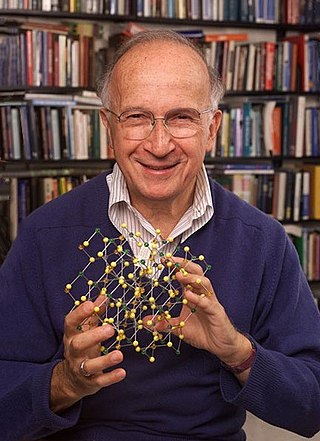
Roald Hoffmann is a Polish-American theoretical chemist who won the 1981 Nobel Prize in Chemistry. He has also published plays and poetry. He is the Frank H. T. Rhodes Professor of Humane Letters Emeritus at Cornell University.
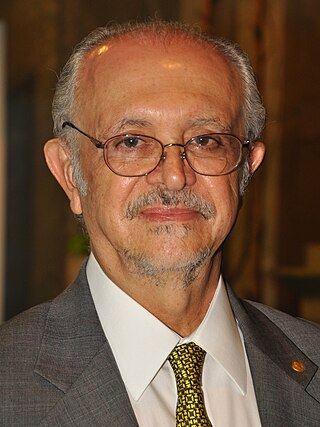
Mario José Molina-Pasquel Henríquez was a Mexican physical chemist. He played a pivotal role in the discovery of the Antarctic ozone hole, and was a co-recipient of the 1995 Nobel Prize in Chemistry for his role in discovering the threat to the Earth's ozone layer from chlorofluorocarbon (CFC) gases. He was the first Mexican-born scientist to receive a Nobel Prize in Chemistry and the third Mexican-born person to receive a Nobel prize.

Carl Djerassi was an Austrian-born Bulgarian-American pharmaceutical chemist, novelist, playwright and co-founder of Djerassi Resident Artists Program with Diane Wood Middlebrook. He is best known for his contribution to the development of oral contraceptive pills, nicknamed the "father of the pill".
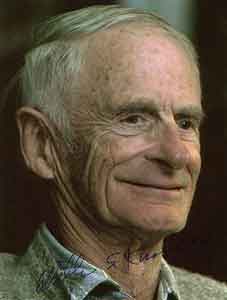
William Standish Knowles was an American chemist. He was born in Taunton, Massachusetts. Knowles was one of the recipients of the 2001 Nobel Prize in Chemistry. He split half the prize with Ryōji Noyori for their work in asymmetric synthesis, specifically for his work in hydrogenation reactions. The other half was awarded to K. Barry Sharpless for his work in oxidation reactions.

Robert Howard GrubbsForMemRS was an American chemist and the Victor and Elizabeth Atkins Professor of Chemistry at the California Institute of Technology in Pasadena, California. He was a co-recipient of the 2005 Nobel Prize in Chemistry for his work on olefin metathesis.
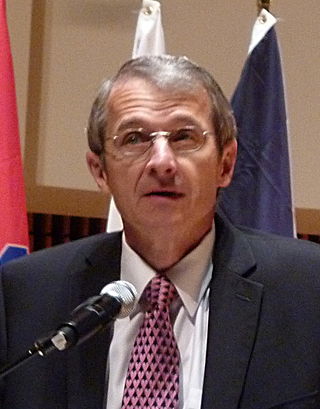
Richard Royce Schrock is an American chemist and Nobel laureate recognized for his contributions to the olefin metathesis reaction used in organic chemistry.

Luis Ernesto Miramontes Cárdenas was a Mexican chemist known as co-inventor and the first to synthesize an oral contraceptive, progestin norethisterone.
Gilbert Stork was a Belgian-American organic chemist. For a quarter of a century he was the Eugene Higgins Professor of Chemistry Emeritus at Columbia University. He is known for making significant contributions to the total synthesis of natural products, including a lifelong fascination with the synthesis of quinine. In so doing he also made a number of contributions to mechanistic understanding of reactions, and performed pioneering work on enamine chemistry, leading to development of the Stork enamine alkylation. It is believed he was responsible for the first planned stereocontrolled synthesis as well as the first natural product to be synthesised with high stereoselectivity.
Elkan Rogers Blout was a biochemist at Polaroid Corporation, Boston Children's Hospital, and the Edward S. Harkness Professor of Biological Chemistry, emeritus at Harvard University.
Laboratorios Syntex SA was a pharmaceutical company formed in Mexico City in January 1944 by Russell Marker, Emeric Somlo, and Federico Lehmann to manufacture therapeutic steroids from the Mexican yams called cabeza de negro and Barbasco. The demand for barbasco by Syntex initiated the Mexican barbasco trade.

George Rosenkranz was a pioneering Hungarian-born Mexican scientist in the field of steroid chemistry, who used native Mexican plant sources as raw materials. He was born in Hungary, studied in Switzerland and emigrated to the Americas to escape the Nazis, eventually settling in Mexico.

George McClelland Whitesides is an American chemist and professor of chemistry at Harvard University. He is best known for his work in the areas of nuclear magnetic resonance spectroscopy, organometallic chemistry, molecular self-assembly, soft lithography, microfabrication, microfluidics, and nanotechnology. A prolific author and patent holder who has received many awards, he received the highest Hirsch index rating of all living chemists in 2011.

Mary Lowe Good was an American inorganic chemist who worked academically, in industrial research and in government. Good contributed to the understanding of catalysts such as ruthenium which activate or speed up chemical reactions.
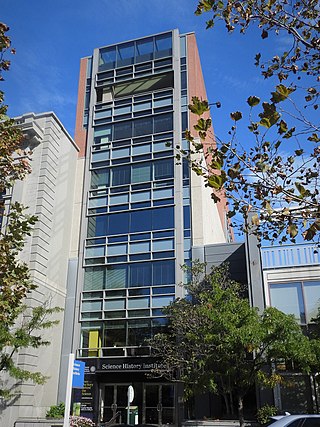
The Science History Institute is an institution that preserves and promotes understanding of the history of science. Located in Philadelphia, Pennsylvania, it includes a library, museum, archive, research center and conference center.
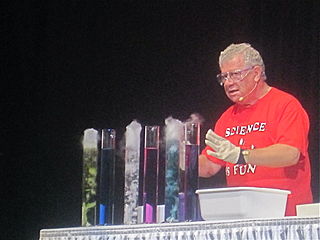
Bassam Z. Shakhashiri is a professor of chemistry at the University of Wisconsin-Madison, where he is the holder of the William T. Evjue Distinguished Chair. An active advocate for science education, he is the author of multiple books of chemical demonstrations. He was the 2012 president of the American Chemical Society and has received numerous awards and honors.
Catherine T. Hunt is an American chemist. In 2007, she served as the president of the American Chemical Society (ACS). She was a director at Dow Chemical Company.

Arnold Thackray is an emeritus professor at the University of Pennsylvania. Initially an English chemist, he moved to the United States, where he founded or extended a series of institutions, initially in Philadelphia, then on a wider scale with the History of Science Society (HSS), Science History Consultants, and the Life Sciences Foundation.

Charles C. Price was an American chemist and president of the American Chemical Society (1965). He taught at the University of Illinois at Chicago, the University of Notre Dame, and the University of Pennsylvania.

Madeleine Jacobs was the CEO of the American Chemical Society (ACS) from 2004 to 2014, and the president and CEO of the Council of Scientific Society Presidents from 2015 to 2016.

Edmond Gerald Meyer is emeritus professor of chemistry and former dean of the college of arts and sciences at the University of Wyoming. He is a past president of the American Institute of Chemists and an active member of the American Chemical Society, serving on the ACS National Council for 27 years.
















